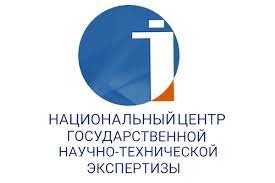Lexical-phraseological features of phrasal verbs and difficulties in their study
Abstract
Modern English language has a particularly large number of combinations of postpositions with verbs. Their number is growing steadily. This is evidenced by books, dictionaries, dedicated to phrasal verbs and their use. Along with the increasing number, the frequency of their use is also growing. This means that they perform a desired function due to their greater brevity and expressiveness. The study of phrasal verbs is one of the most difficult tasks for a person who wants to improve his or her level of the English language. Phrasal verbs that are more frequently used in conversation have already moved to the language of the media, business and economy.
Keywords
About the Authors
K. Sh. KhusainovKazakhstan
Doctor of Philology, Professor
Almaty
M. Zhambylkyzy
Kazakhstan
Lecturer
Chair of Diplomatic Translation
Almaty
References
1. Anichkov I. E. (1997). Works on linguistics. Saint Petersburg: Nauka.
2. Baitursynov A. (1992). Language readings. Almaty: Аnа tili, 448 p.
3. Baskakov N. A. (1963). Analytical and synthetic grammatical forms - stages of morphological word development. In: Analytical constructions in languages of various types. – Moscow - Leningrad, pp.18-19.
4. Black, M. (1990). Metaphor. Theory of metaphor. – Moscow, p. 153.
5. Dzhanmavov, Yu. D. (1967). Adverbial participles in the Kumyk standard language. – Moscow, p. 211.
6. Erimbetova, A. M. (1999).From identity to the contrary: linguistic forms of expression. – Almaty, p. 8.
7. Ganiyev, F. A. (1963). Specific characteristic of verbs in the Tatar language. Kazan.
8. Kasymova, B. (1992). Compound verbs inthe modern Kazakh language. – Alma-Ata, 22 p.
9. Kemelbekova, E. A. Phraseological units in English and methodsof their translationinto Russian. p. 241.
10. Kunin, A. V. (1970). English phraseology. – Moscow. p. 211.
11. Malov, S. E. (1951). Monuments of the Old Turkicwriting system. – Moscow - Leningrad: Publishing house of the Academy of Sciences of the USSR, 447 p.
12. Modern Kazakh language (1952). – Moscow: Moscow State University, 519 p.
13. Ogoltsev, V. M. (1973). Fixed comparative structures in the language system. Systematicity of the Russianlanguage. –Novgorod, p. 17.
14. Ogoltsev, V. M. (1974). Fixed comparative structures in the system of the modern Russian language.Abstract of doctoral dissertation, p. 12.
15. Oralbayeva, N. (1979). Verb meaning and analytical construction in themodern Kazakh language. –Almaty: Gylym, 192 p.
16. Povey, J. (1984). Get it right. – Moscow: Vysshaya Shkola. p. 211.
17. Scherbak, A. M. (1961). Grammar sketch of the language of Turkic texts of the X-XIII centuries from East Turkestan. – Moscow - Leningrad.
18. Sevortyan, E. V. (1965). Grammatical and semantic features of analytical constructions in distinction from collocations in Turkic languages. In: Analytical constructions in languages of various types. – Moscow - Leningrad, pp. 233-239.
19. Smirnitsky, A. I. (1959). English morphology. Moscow. p. 54.
20. Stepanova, M.D. (1953). Morphological derivation in the modern German language. – Moscow. p.311.
21. Vasilyev, A. (2005). English: rules of pronunciation and reading, grammar, conversational language. –Saint Petersburg: Znaniye. p.70.
22. Yuldashev, A.A. (1965). Analytical verb forms in Turkic languages. –Moscow. p.21.
23. Zhirmunsky, V.M. (1965).On analytical constructions. In: Analytical constructions in languages of various types. –Moscow-Leningrad, p.37.
24. Zhubanov, K. (1966). Research on the Kazakh language. –Almaty: Gylym, 360 p.
Review
For citations:
Khusainov K.Sh., Zhambylkyzy M. Lexical-phraseological features of phrasal verbs and difficulties in their study. Tiltanym. 2017;(4):101-108.















